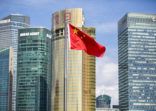David Gaud, Pictet Wealth Management
In the past, investors could gain exposure to Asia by investing in multinational companies in the US and Europe that derived substantial revenues from the region, he said during a recent trip to Hong Kong.
Now these multinationals compete with domestic leaders and are therefore no longer the best proxies to benefit from economic growth in Asia. In addition, the local industry leaders are less vulnerable to macroeconomic pressures than the multinationals.
Gaud zeroed in on China’s domestic healthcare industry as an example.
Three years ago, China and Hong Kong had few listed healthcare companies he considered investible and there were no clear industry leaders.
Today, after an industry consolidation, the healthcare landscape is more clear and the quality of management at healthcare companies has greatly improved, he said.
“The leading medicine makers are well-established and their products are approved by the authorities and included in the state distribution list. Their management team meets investors regularly and shows a clear plan for the company’s long-term development.”
Domestic players also price their drugs cheaper than their global peers. “The medicine produced by the international drug makers is usually priced around 30%-40% more expensive than the players on-the-ground. Hospitals in China have a hard time justifying the reasons for buying expensive drugs if there are cheaper alternatives available domestically,” Gaud said.
Shenyang-based biotechnology company 3sbio is included as a market leader example provided by Gaud. The Hong Kong-listed company has $50bn in total market cap and its stock price has risen 15.4% year-to-date, outperforming the -3.9% return by Hang Seng Index, according to FE.
Volatility caused by the US-China trade tensions and China’s deleveraging process he believes is short-term. These macro issues should not prevent investors from allocating money into Asia’s market leaders across all industries, he said.
Like China, Asia has quality home-grown companies with strong balance sheets, low debt gearing and a track record of earnings growth, Gaud said.
“Even though interest rates are rising globally, these companies do not require much credit to sustain their operations.”
He added that the stronger market players typically have a market capitalisation of $1bn-$10bn.
“In some sectors, such as tourism, healthcare and consumption, Asia’s leaders are already in place.”
Examples of market leaders in Asia, according to Gaud


















